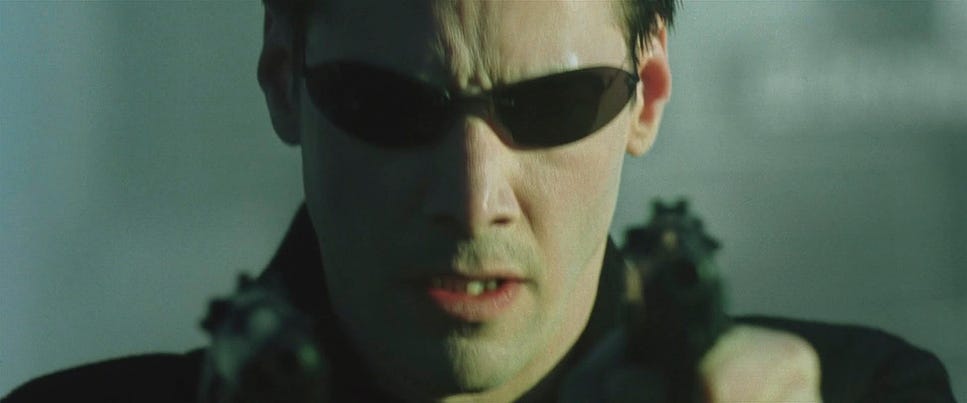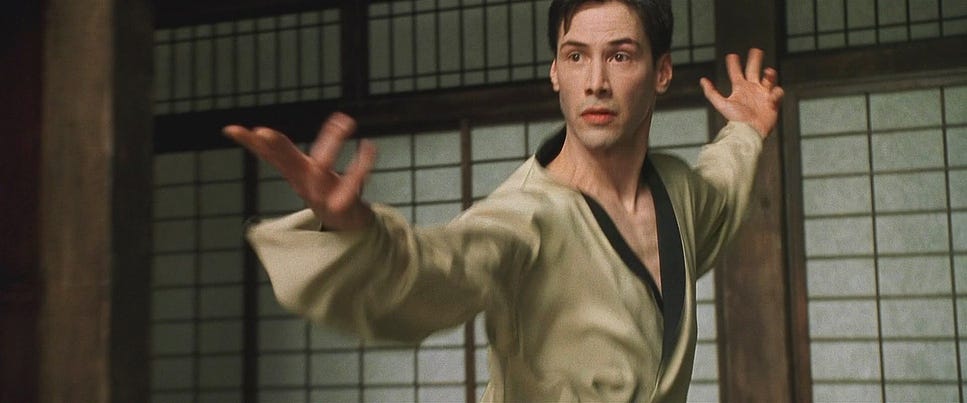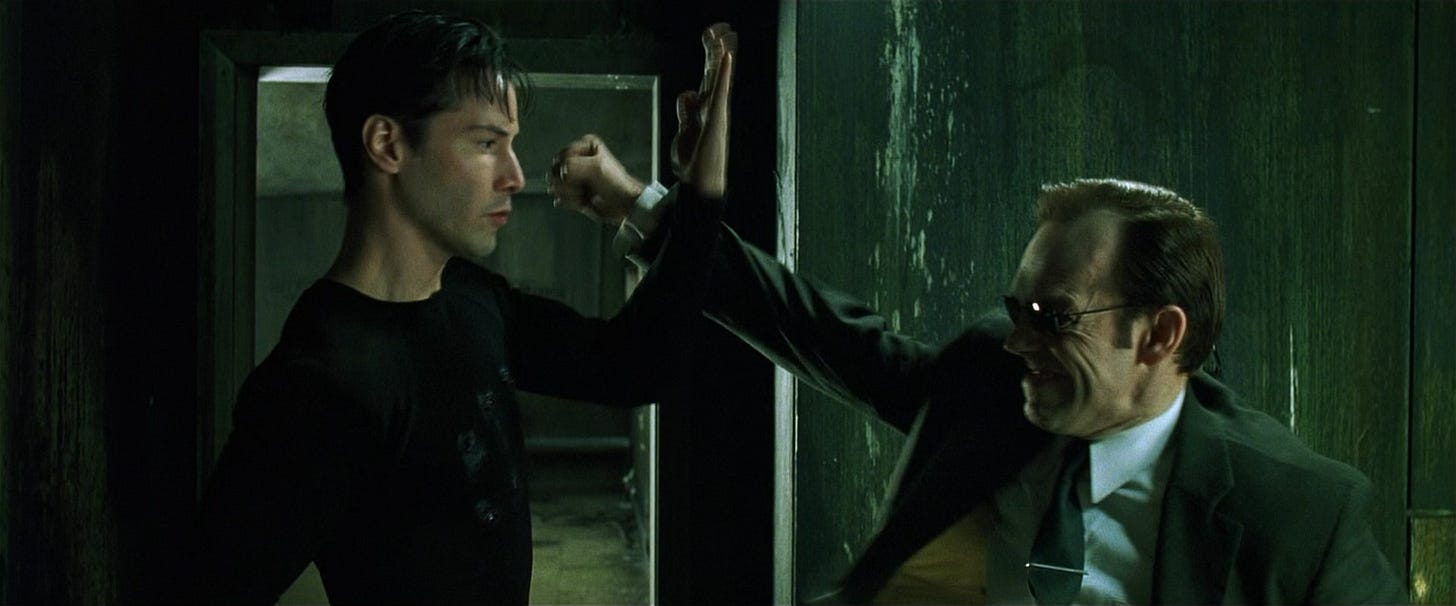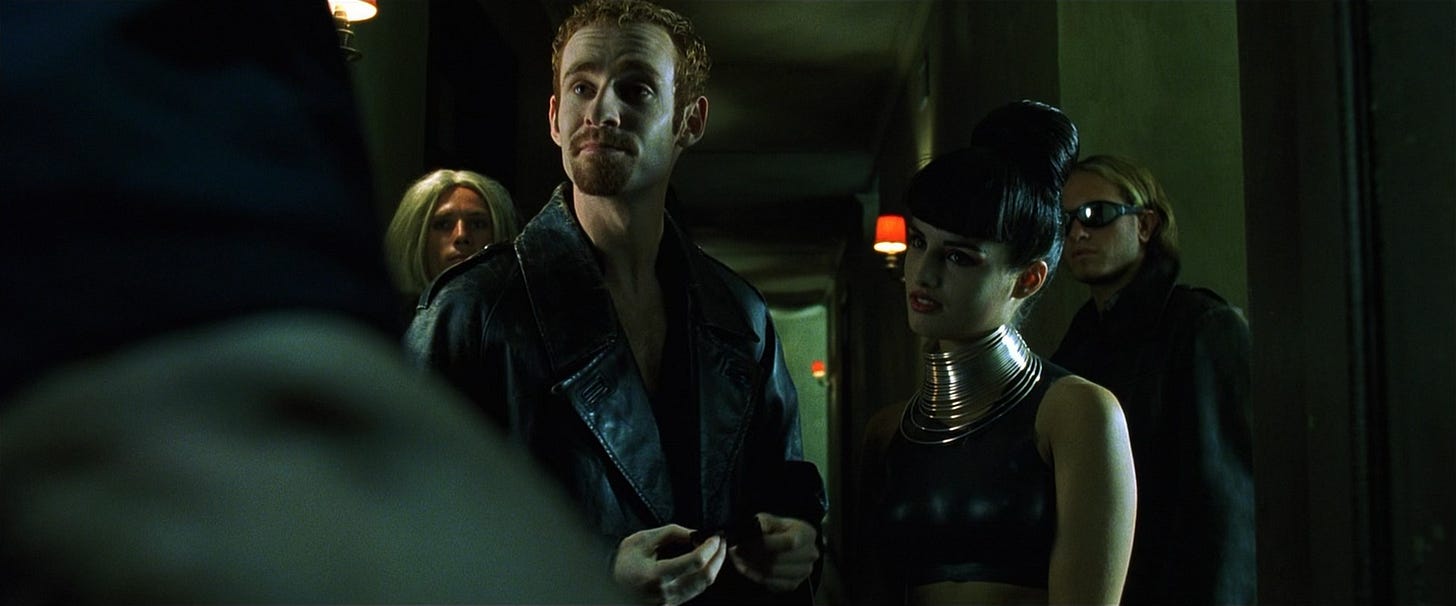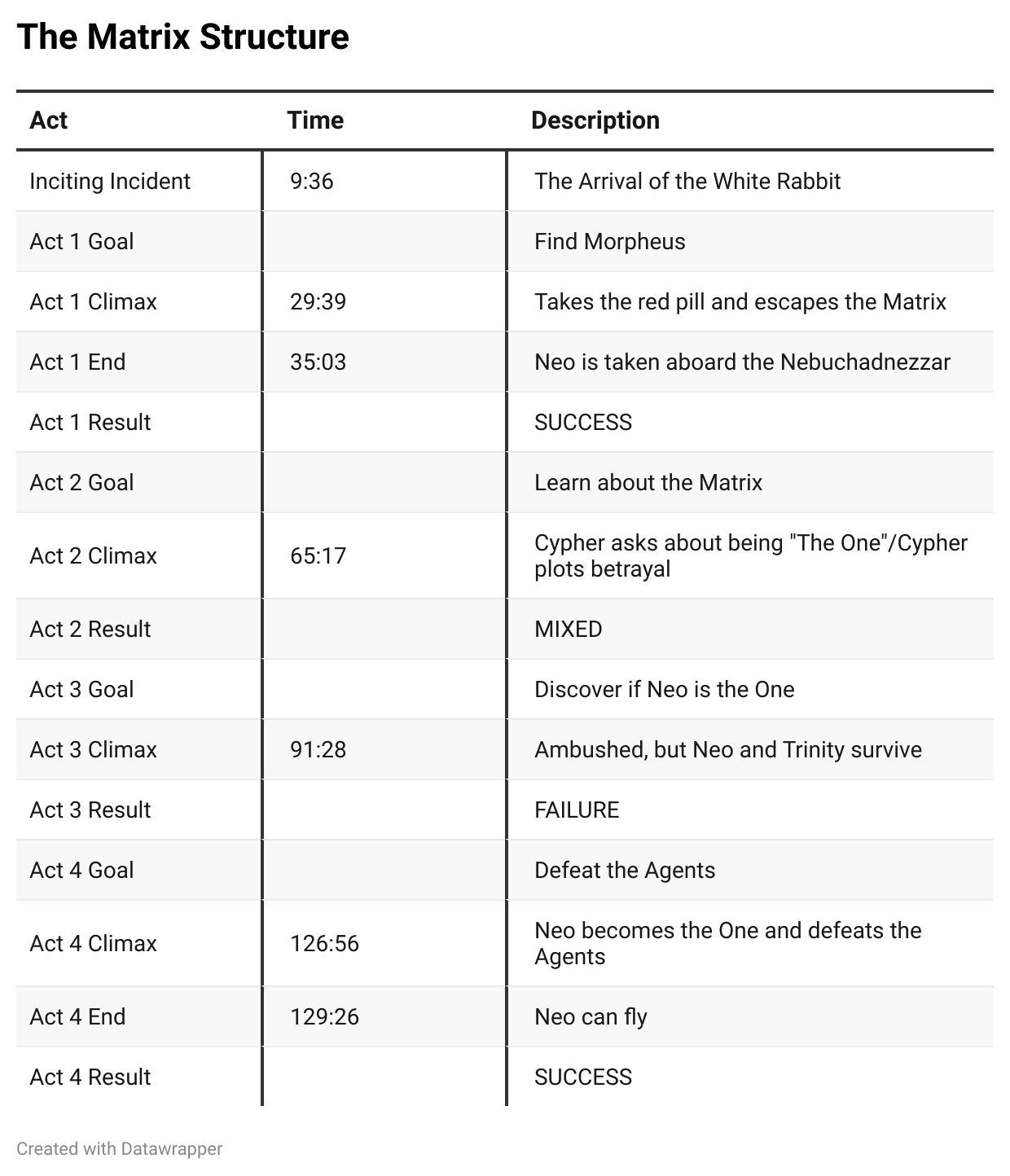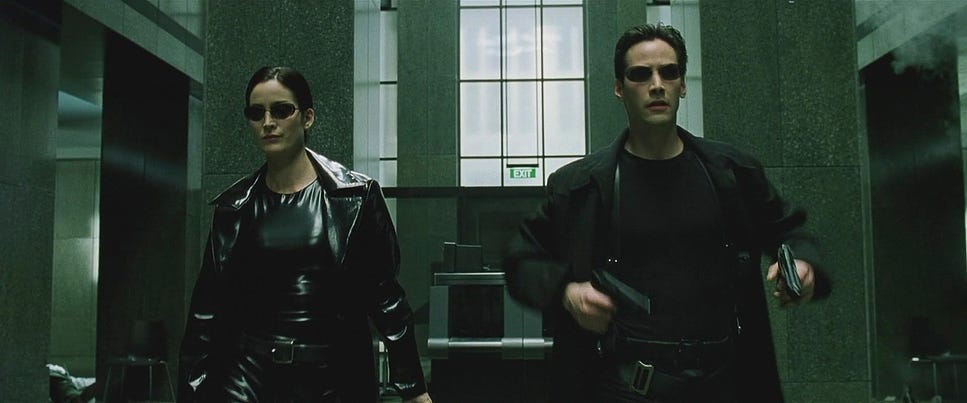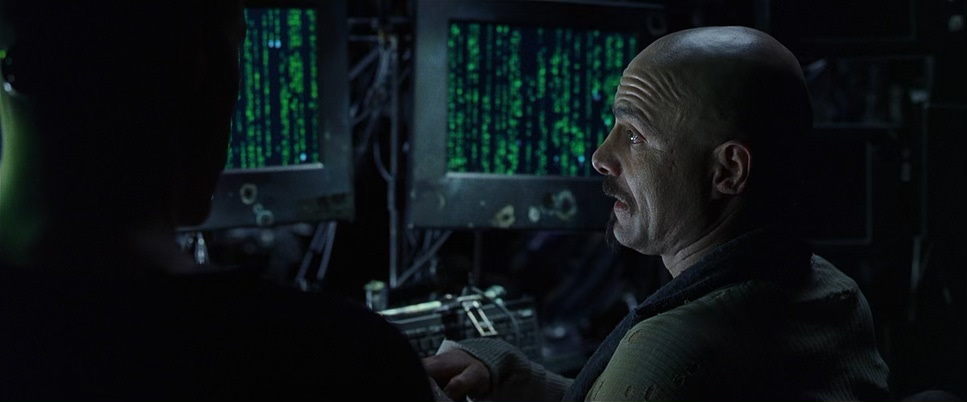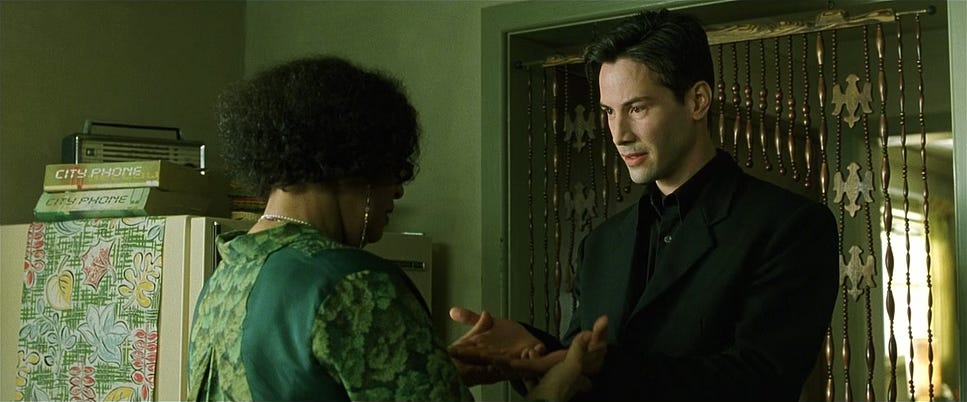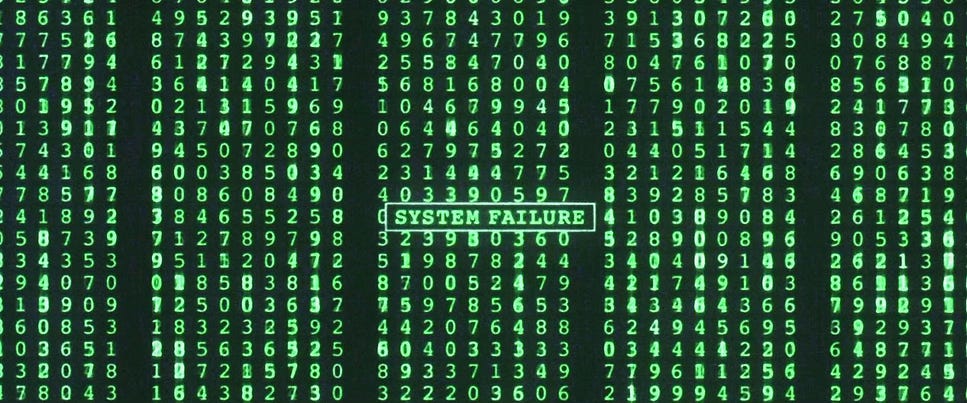This week I thought I'd bring you the structure breakdown of the classic sci-fi action film The Matrix directed by The Wachowskis. The Matrix is a movie I have been using as a case study for basic structure for a long time in my script analysis class. It has all the features that I need to teach my students the basic aspects of narrative structure, from a clear cut protagonist with both external and internal goals, to a well laid out four act structure, to the simplicity needed to illustrate the basic concepts of structure. Since we covered the film in my class last week, I thought this would be a good time to share my structure breakdown with The Hutch Files.
As always, these breakdowns contain SPOILERS, and are only recommended if you've already seen the movie. You can check my introduction to these breakdowns, to get an overview of my process and philosophy.
Feel free to let me know what you think in the comments below!
The Basics
Director: Lana Wachowski and Lilly Wachowski
Writers: Lana Wachowski and Lilly Wachowski
Release Date: 1999
Runtime: 136 Minutes
IMDB: https://www.imdb.com/title/tt0133093/
Movie Level Goals
Protagonist: Neo
External: Defeat the Agents
SUCCESS | FAILURE | MIXED
Internal Goal: Become the One
SUCCESS | FAILURE | MIXED
Goal Relationship: Internal Goal Leads to External Goal: Neo must become The One to defeat the agents
Relationship Goal: Be with Trinity
SUCCESS | FAILURE | MIXED
Goal Relationship: Trinity is “fated” to be with The One, but when Neo dies, Trinity kisses him and resurrects him, so in the end he must be with Trinity to become The One
Relationship Goal—>Internal Goal—>External Goal
Three Observations
Observation #1: The Three Goal Structure
The three goal structure of The Matrix is actually quite unusual. In fact, when I teach The Matrix to my class I tend to leave out the relationship goal because it complicates the discussion. In most arch plots, characters generally have two goals: the external goal and the eternal goal. These goals are related, with either the success of the internal goal dependent on success of the external goal or the reverse. With The Matrix the relationship between the external and internal goals is pretty straightforward. Neo you must become the one in order to defeat the agents so in this case the external goal success is dependent on achievement of the internal goal must become “The One” in order to defeat the agents. So in this case, the external goal success is dependent on achievement of the internal goal.
But as you can see above the goal structure of The Matrix is complicated by the addition of a third relationship goal. Relationship goals are not completely uncommon. Often times when a movie has a strong external goal, the relationship goal serves as the internal goal. Occasionally movies do have three goals, with traditional external and internal goals, but also with the addition of relationship goal. For example, you can see my breakdown of the Michael Mann movie Thief as an example of a three goal movie. Other movies like Anderson's film Rushmore also have three goals, with an external internal and relationship goal (this is a movie I need to publish a breakdown for in the near future).
What's interesting about the three goals in The Matrix, is the way they relate to each other. In most films, if there is a relationship goal its success is dependent on either the internal goal or the external goal. Occasionally if the relationship goal is also the internal goal, it may need to be achieved before the external goal can be achieved. However, the more common situation is that a protagonist achieves their external goal, which then allows them to successfully complete their relationship goal. A movie like Die Hard is a good example of this.
In The Matrix however, the relationship goal must be completed first. This is because of the mythical and religious themes that the Wachowskis have embedded in the movie. When Neo confronts the agents at the end of the movie it seems like he has become “The One.” But actually, he has not fully become “The One”, and in fact the agents shoot and kill him. The theme of resurrection and the portrayal of Neo as a Christ-like figure is tied to Trinity's love for Neo. So when Neo dies, it is her kiss that resurrects him and completes the relationship goal. This in essence is the final step in him becoming “The One”, and so he completes the internal goal. And of course once he's “The One”, he is able to defeat the agents, specifically agent Smith, and finally completes the external goal.
Observation #2: The Act Two Climax
While I stated in the introduction that the matrix has a pretty classic four act structure, it turns out that there are a few interesting wrinkles, especially in act two an act three (which we’ll discuss below). Act two starts clearly enough, with Neo waking up aboard the ship, the Nebuchadnezzar. Neo is obviously disoriented and confused and this is further exacerbated by the fact that Morpheus tells him pretty quickly that he may be ”The One.” Pretty quickly, Neo begins learning about the new world he lives in, the Matrix, and starts to train in the simulator. The active goal becomes pretty obvious at this point: his goal is to learn about the Matrix and its rules. We might also say that he has the goal of maximizing his potential, since he knows early on that Morpheus thinks he may be “The One.”
Where are things get a little unusual is in the climax of the act. The scene that most clearly feels like a climactic moment is the jump scene, in which Morpheus challenges to jump from the roof of one skyscraper to another inside the simulator. Neo fails at this challenge, and so it seems like he fails at his goal of learning about the Matrix and maximizing his potential. However, act two continues for six more scenes. It might be tempting to argue that these scenes are the beginning of act three. However, the final of the six scenes is Cypher meeting with Agent Smith inside the matrix, and the following scene is Morpheus telling the crew that they're going to see The Oracle, which is clearly the beginning of act three. So I think we have to see these six scenes as the final scenes of act two. They are:
The scene in which Neo realizes that if you're killed in the Matrix you die in real life
Cypher giving Trinity a hard time after she brings Neo food while he's sleeping
Neo and Morpheus in the “Woman in the red dress” program
The attack of the sentinels
Neo sharing a drink with Cypher
Cypher meeting with agent Smith and agreeing to portray his friends
Honestly, none of these scenes provides a strong climax to Neo's goal of learning the rules of the Matrix and trying to maximize his potential. In some ways I think it would have made more sense to switch the order of the “jump program” scene with the “woman in the red dress” scene. That would have made the “jump scene’ much closer to the end of the act where it could have served as a stronger climax. Instead, I think we have to look at the scene of of Neo sharing a drink with Cypher as the closest thing to a climactic scene for Neo's goal specifically. Cypher ask Neo if he knows that he supposed to be the one and when Neo replies in the affirmative, Cypher tells him what a heavy burden that must be. While Neo has almost no lines in this scene, Vyphers's reactions and Neo's hesitancy tell us the seriousness of being “The One”, and reinforces the fact that at least at this point Neo doesn't seem to be The One.
Observation #3: The Misleading Act Three
Act three also has a little bit of a wrinkle. I think the goal and climax of the act are pretty straightforward. Morpheus brings Neo into the Matrix with the goal of discovering from the Oracle if Neo is the one. The act climaxes with Cypher killing most of the crew but dying at the hands of Tank, who then brings Neo and Trinity back on board the Nebuchadnezzar. The interesting wrinkle is that the goal and the climax don't seem directly related. Normally the whole point of an act climax is to resolve the act goal: does the protagonist succeed or fail at the goal. The first issue, is that the goal of discovering if Neo is “The One” actually seems to be Morpheus's goal more than it is Neo's goal. Secondly, the Oracle seemingly tells Neo that he is not “The One.” We could interpret this in a couple of different ways. First, if Neo discovers that he's not “The One”, he still has succeeded at his goal which is to discover if he's “The One” or not. He's just discovered that he's not. Second, we could see the Oracle telling Neo that he's not “The One” as the main conflict for Neo. However, it's not really clear that Neo especially wants to be “The One”, although he does seem to want to please Morpheus.
So how do we resolve all of this? This is another situation where the Wachowskis have cleverly misled us. It turns out that although we think Neo has discovered whether he is “The One” or not, he really has not. The Oracle has only told him that he is not “The One” right now. Because they are attacked by the agents almost immediately after Neo's meeting with The Oracle, Neo is unable to fully explore, think about, or discuss The Oracle’s answers. So in fact, the attack by the agents and the following betrayal by Cypher don't allow Neo the opportunity to actually discover if he's the one, and so he fails at his act goal. Of course, there's a reason for this. Morpheus must be kidnapped and many of the crew members killed, for Neo to step up and choose to risk his life to save Morpheus. And he must do this in order to eventually become “The One.”

